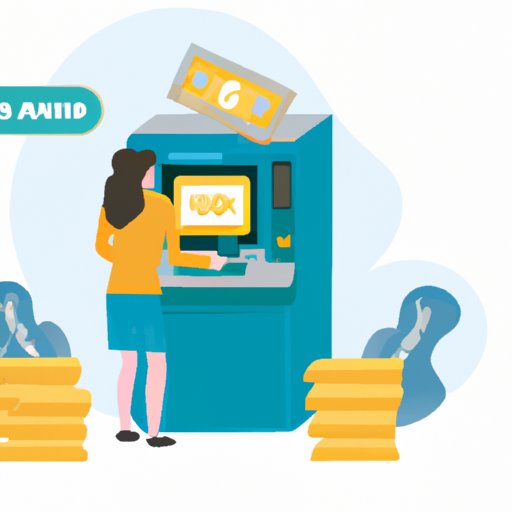Introduction
Withdrawing money from a credit card is often seen as a last resort in times of financial hardship. It can be a convenient way to access cash when needed, but it comes with its own set of risks and costs. Knowing the right steps to take when withdrawing money from a credit card online is essential for making sure you get the most out of the process.
The purpose of this article is to provide a comprehensive guide on how to withdraw money from a credit card online. We will look at different aspects of the process, including researching credit card companies, verifying fees, setting up an online account and more.

Research Credit Card Companies that Offer Online Withdrawal of Funds
When it comes to withdrawing money from a credit card, not all companies are created equal. Different credit card companies have different withdrawal limits, fees, and additional requirements. So it’s important to do your research and compare different offers before deciding on a particular company.
When comparing different credit card companies, consider the following factors: withdrawal limits, fees, additional requirements, and customer service. Make sure to read the fine print and understand the terms and conditions associated with each offer before making your choice.
Verify the Fees Associated with Withdrawing Money from a Credit Card
Once you’ve chosen a credit card company to work with, the next step is to verify the fees associated with withdrawing money from the card. Most credit card companies charge a fee for withdrawals, usually a percentage of the total amount withdrawn. Additionally, there may be other fees associated with the process, such as foreign transaction fees or ATM fees.
It’s important to understand what fees you’ll be charged before initiating a withdrawal. Make sure to read the company’s terms and conditions carefully and ask questions if something is unclear.

Set Up an Online Account with the Credit Card Company
Once you’ve verified the fees associated with withdrawing money from a credit card, the next step is to set up an online account with the company. To do this, you’ll need to provide some personal information, such as your name, address, and date of birth. You’ll also need to link your credit card to a bank account. This will allow you to transfer funds from the credit card to the bank account.
Once your account is set up, you’ll be able to access the company’s website and initiate a withdrawal. Make sure to keep your login information secure to protect your privacy and prevent unauthorized access.
Learn the Process for Initiating a Withdrawal from the Credit Card Company’s Website
The next step is to learn the process for initiating a withdrawal from the credit card company’s website. Different companies have different processes, so make sure to review the instructions provided by the website carefully. Generally, you’ll need to enter the amount you want to withdraw, select a payment method, and confirm the withdrawal.
Some companies also require additional steps, such as entering a security code or providing additional information. Make sure to follow all of the instructions provided by the website to ensure that the withdrawal is successful.

Follow the Instructions on the Website to Complete the Withdrawal
Once you’ve initiated a withdrawal, the process is generally automatic. The funds should be transferred from the credit card to the bank account within a few minutes. However, it’s important to monitor the withdrawal process to make sure that the funds are transferred successfully.
If there’s a problem with the withdrawal, contact the credit card company immediately. They should be able to help you troubleshoot any issues and make sure the withdrawal is completed successfully.
Conclusion
Withdrawing money from a credit card online can be a convenient way to access cash when needed. But it’s important to do your research and understand the fees and risks associated with the process. By following the steps outlined in this article, you can make sure that you get the most out of the process and avoid any unnecessary costs or complications.


